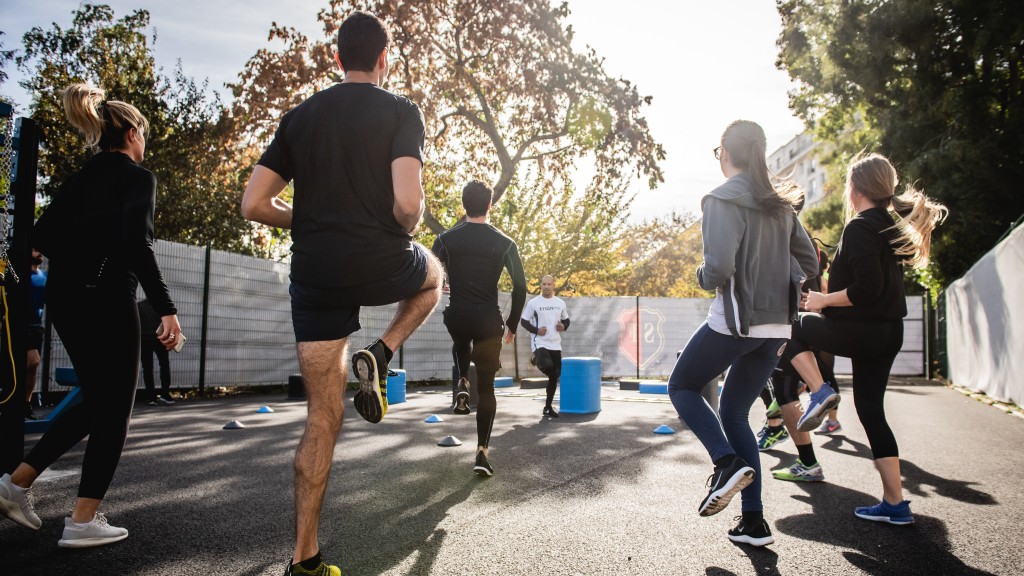Sedentarism is the new smoking. That’s a big claim, but one grounded in reality.
As the name suggests, sedentarism is simply living a sedentary lifestyle. In other words, one based around low levels of movement and activity. Think hours of sitting, while engaging in very little meaningful movement.
Chances are, as a person living in the 21st century, you are living quite a sedentary lifestyle. Luckily, just like quitting smoking, changing your activity habits can drastically improve your health. 🚭
In this article, we are looking at sedentarism and its consequences in more detail, as well as asking what we can do about it.
Thankfully, the answer is pretty simple!
- What is sedentarism?
- What is the problem with sedentarism?
- Why ‘exercise’ isn’t enough
- How to beat sedentarism
- Why walking is so important
- How to do more walking
- The final word on sedentarism
What is sedentarism?

For millennia, human life was filled with movement. 🚶
Throughout history, people foraged for food, went to war, worked down mines, and used manual tools. (Come on, we have all heard an elderly relative wax lyrical about ‘walking five miles to school in the snow every day’!).
Ultimately, being physically fit and constantly active has been paramount to human survival.
Then came the car, the office, and the smartphone. Enter, sedentarism.
There’s no hiding that the vast majority of modern life involves sitting and staying relatively still.
You can now make a living, go grocery shopping, sort your finances, answer the door, and catch up with friends, all without leaving your desk.
Your relaxation away from the desk may involve blobbing out on the sofa for the rest of the evening in front of Netflix.
When we do head outside, drive-through restaurants and coffee shops ensure that we can avoid getting out of the car to satisfy those fat, salt and caffeine cravings. 🍔
As you retire into bed, you can turn on the heating and turn off the light using your smartphone.
It’s lucky that iPhones cannot drain bladders, otherwise we may never need to move again!
What is the problem with sedentarism?

The sedentarism consequences are massive. In short, it is a colossal risk to health.
Ultimately, sitting is the new smoking.
Why is sitting bad for you? Forgetting the important fact that sitting turns off calorie- and fat-burning processes in the body (which can definitely lead to a dad bod, or worse!), sedentary lifestyles have been linked to every ailment under the sun including:
- strokes
- type 2 diabetes
- heart disease
- various cancers
- chronic pain
- postural issues
- multiple mental health disorders
So yes, quite a few consequences of sedentarism!
Plucking just one study from 2020, researchers who looked at reduced physical inactivity during the COVID-19 pandemic concluded that just a few days of sedentary living are sufficient to induce muscle loss, insulin resistance, decreased aerobic capacity, fat deposition, and other unwanted bodily processes.
In other words, sit around and watch your waist expand while your quality of life quickly decreases.
Why ‘exercise’ isn’t enough

Of course, many people already know that this sitting epidemic is not good for them.
You may be one of them. In fact, you may have taken counteractive measures to battle sedentarism and its consequences with a formal exercise routine that might include running, cycling, swimming or dance classes.
Yet the truth is that a few activity sessions each week barely scrape the surface in combatting the amount of inactivity involved in 21st-century life.
Think of it like this: if you do six 30-minute sessions each week – say, three morning jogs and three Zumba classes – then that’s a combined three hours of formal exercise.
On the surface, this is actually a very good effort.
Yet of the 168 hours in the week, this equates to just 1.8% as time spent moving!
Worryingly, many people won’t even do these three hours of movement and will rely on incidental movement alone.
If their incidental movement is walking from the sofa to the biscuit tin, then we are in BIG trouble. 😳
How to beat sedentarism

So what do we do?
Panic and book another two classes at the gym? Do a run before work, then a swim after?
These extra exercise sessions may help, but watch out for the overwhelm that can devastate enthusiasm.
Unsurprisingly, suddenly going from sedentary to very active is unsustainable. Think of what happens every January. New year’s resolutions are made across the country, often as the last of the Quality Street are polished off.
With the greatest of intentions, people plan to finally lose the belly and get fit… by going from inactivity to five days of morning jogs each week. No wonder that it takes just a few days to either exhaust or injure themselves, and then quit.
Clearly there is great value in formal higher-intensity exercise. These activities have incredible benefits. Yet trying to boost your movement levels by adding more formal exercise can be a recipe for failure.
Luckily, the remedy to sedentarism is simple: walking. 🚶♂️
Why walking is so important

For something so simple, walking is something of a health and wellbeing all-star.
Let’s start with the obvious: the act of walking burns calories, which is important in our battle against sedentarism.
The exact number of calories will depend on your weight, gender, walking speed and many other factors, but roughly 20 steps will burn one calorie.
However, walking cannot be reduced to a simple calorie burner.
Importantly, it can strengthen your heart, lowering both blood pressure and the risk of a heart attack.
Meanwhile, walking can also toughen the muscles in your legs, particularly if you incorporate gradients like hills and stairs, and it can also ease joint pain by encouraging the flow of the lubricating synovial fluid in your joints.
In terms of digestive health, walking helps speed up peristalsis – the movement of food through your digestive tract – which can ease digestive complaints and contribute to a feeling of greater satiation. An after-dinner walk can help you feel more satisfied with less food.
Finally, it’s worth mentioning that walking is equally beneficial to your mental health. It’s an effective way to reduce stress, anxiety and depression, while boosting creativity.
But to truly see these benefits manifest, walking must become a habit.
How to do more walking

This article is long enough, and I will tackle this topic soon, but I will sum up with two ways to incorporate more walking into your day as you battle sedentarism.
Track and increase
Start tracking and monitoring your steps. Begin by recording a week of walking as you usually would (Week 0).
At the end of the week, determine your weekly average, then add 10% to your daily target for the following week.
For example, if you walked an average of 2,000 steps per day in Week 0, then your target would be 2,200 per day for Week 1 (2,000 + 10%), then 2,420 per day for Week 2 (2,200 + 10%).
If you find it easier then you can simply stick to a static number, such as adding 200 steps per day each week. In other words, 2,000 in Week 0; 2,200 in Week 1; 2,400 in Week 2, etc.
There is no hard rule here – just add a realistic number for you and do your best to achieve it. If you can, exceed this number regularly, especially on weekends when you have more free time.
Increase incidental walking
Start increasing your incidental walking by walking wherever you can. 🚶♀️
Here are some suggestions:
- Stop ordering groceries online – physically go to the supermarket for your shopping
- When you get there, park further away from doors…
- …or walk to the supermarket in the first place!
- Walk for short journeys: to work, to take the kids to school, to grab a newspaper
- Get off the bus or train one/two stops early and walk the rest of the way
- At the office, use the stairs instead of the lift
- At the tube station, use the stairs instead of the escalators
- Stand up and pace the room when you are on the phone
- Stand up and pace the room during ad breaks on TV
For more on creating an effective walking habit, I suggest you read about Norway’s culture of sondagstur – this article has a section on how to increase your step count towards the bottom of the page.
The final word on sedentarism

While seemingly harmless, sedentarism is an epidemic that is linked to so many health complaints and diseases. We all must battle it to improve our health.
We have discussed why sitting is bad for you and why exercise sessions are not enough, which is why I recommend walking more each day.
Walking is fundamental fitness. It’s something that most people can do at any age and anywhere, it’s low-impact and safe for your joints, very little skill is required, and it doesn’t cost money!
Use some of my tips to increase your daily walking and watch your health improve. 🙂


One thought on “The Sedentarism Epidemic (and Why ‘Exercise’ Isn’t Enough!)”